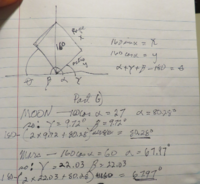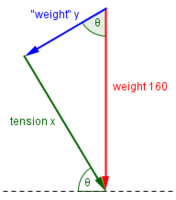yoscar04
Full Member
- Joined
- Jun 3, 2020
- Messages
- 274
I see, I got it wrong. I confused the question with something else, the tension.No
The component of the "force" along the x-axis will be the tension along the supporting wire (minus any frictional force in the boots). The first line of the problem in part (b) tells you that.


